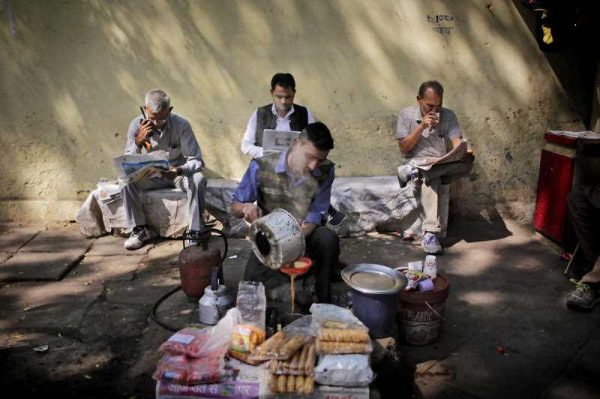The Central Statistics Office and International Monetary Fund (IMF) numbers indicate that India is now the fastest growing major economy in the world. But other indicators, such as the Index of Industrial Production, export figures, corporate profits, credit growth, and investment data, tell another story. These figures indicate that India’s growth may have suffered as much as China’s.
China’s growth was badly hit because of its reliance on external demand. In contrast, India’s primary engine of growth is putatively domestic, making the sharp decline in Indian growth more surprising. Yet a closer analysis reveals that the reality is more complicated. India was indeed less dependent on global demand than China in 2007, exporting just 20 per cent of its goods and services, compared with China’s 40 per cent. But by 2012 India’s ratio had risen to 24 per cent, while China’s had declined to 27 per cent. India’s adjustment to the global demand compression was thus more imbalanced than that of China.
What should India’s strategy be for realising its undoubtedly high growth potential given the current global economic conditions?
In the past, the global strategy has been to rely on demand in advanced economies to boost growth. But now this model is being undermined by adverse demographics and declining returns to labour, resulting in stagnant real wages. These negative forces were at first suppressed in the pre-crisis period by an unsustainable increase in leverage, which enabled developing economies to register very high rates of growth through global imbalances.
But now no amount of leveraging can suppress these adverse demographics and stagnant real wages. The overhang of private debt and tightening of financial regulation in the post-crisis period has led to deleveraging and demand compression in advanced economies. Unconventional monetary policy has been unable to revive demand, with liquidity injections washing back as banking reserves on the central bank balance sheet in what is described as a liquidity trap. Governments have levered up to unprecedented levels to compensate, but fiscal multipliers have been surprisingly weak.
The revival of consumer demand through a widely hoped for global rebalancing has not occurred: While external imbalances have narrowed, developed countries have lowered their investment as a share of GDP and developed countries have increased it, instead of the other way round. There is now a consensus, forged within the G20, that the return to a high growth trajectory needs far-reaching structural reforms, in both advanced and developing countries. Such reforms are a political nightmare for democracies, especially if there is little fiscal space available to cushion their impact.
The global economy is in search of a new engine of growth, and with India emerging as the fastest growing major economy, there is some speculation that India might take over China’s role. The entry of China into the WTO at the turn of this century was a major stimulus for the global economy. Growth rates rose in both emerging markets, with whom China ran large deficits, and in advanced economies, with whom it ran large surpluses.
China’s share in the global economy at the time was less than what India’s is today. According to the IMF World Economic Outlook database, China’s share of the global economy, measured in current US dollars, was just 3.4 per cent at market exchange rates and 4.5 per cent at purchasing power parity (PPP) in 1999. In comparison, India’s share at market exchange rates in 2015 was 4.8 per cent and 7.1 per cent at PPP.
China leveraged its entry into the WTO to become the global manufacturing hub, catering to robust consumer demand growth in advanced economies. Its own final consumer demand was too modest to serve as the engine of growth for the global economy. The problem in replicating the Chinese model is twofold. First, external demand is weak and global trade is in reverse gear. Second, the environment for manufacturing in India is not very competitive, with its known constraints in infrastructure, tax administration, legislative logjam, and land and labour markets.
Three things are abundantly clear. First, in its current form, India is unlikely to be the new engine of growth. Second, it needs to improve its export competitiveness through politically challenging structural reforms, rather than follow the western folly of expecting monetary policy to do so. Third, since the timeline for the revival of external demand is uncertain, the primary focus of its Make in India, Start-up India and Skill India initiatives should be on leveraging domestic demand. Even so, in an open economy, the success of a domestically driven Make in India initiative hinges on becoming globally competitive.
Alok Sheel is the Additional Chief Secretary in the provincial government of Kerala. He was previously the Secretary of the Prime Minister’s Economic Advisory Council, India.
This article first appeared here in Livemint.

